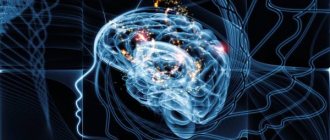What is anorexia in teenagers
More often, children develop a nervous type of pathology, which is a psychological illness, accompanied by an eating disorder.
The disease is characterized by intense and stable weight loss due to an unreasonable and uncontrollable fear of obesity, a misconception about one’s own body, which leads to serious disturbances in metabolic processes in the body. Anorexia in children is comparable to drug addiction and alcoholism, because the teenager does not realize the harmfulness of his desire to lose weight until serious symptoms and consequences appear, as in the photo. The need to get rid of extra pounds is pursued more by girls than by boys. For every 5 sick women there is only 1 man. According to medical research, the prognosis of the pathology is as follows:
- 40% of patients recover completely;
- 30% of patients improve their condition;
- In 24% of cases, the pathology becomes chronic;
- 6% die.
“Men were secretly allowed to look a little better than a monkey.”
The female body has been objectified for a very long time: now through advertising and mass culture, and earlier through art - artists loved to depict naked female bodies, without placing emphasis on the personal qualities and intelligence of women.
“Nowadays, women more often suffer from eating disorders,” confirms Lyudmila, “and all because strict demands are placed on the female body, which are broadcast through the media, advertising, music, books and films. A woman is expected to always take care of her body, appearance and be “forever young.” But men have always been secretly allowed to look “a little better than a monkey.” They were more often assessed according to other criteria: for example, success, intelligence and strength.
– Why do we continue to believe that being thin and slim is right?
– One of the reasons is the clear association of thinness with health. If you look through magazines like Cosmopolitan, you will see that a large number of articles about diets, healthy eating and a slim body are in one section - “Beauty and Health”.
It turns out this connection: diet is health plus beauty. That is why people who are even slightly overweight often feel guilty and their body “bad” not only from the point of view of society, but also from medicine.
But our body is programmed so that we eat, which means that any uncontrolled diet will lead to a breakdown. After each breakdown, a person has a terrible feeling of guilt, which affects self-esteem - this is psychological harm.
For example, on one of the sites where women share their diets and have been practicing them for decades, you can see how they begin to hate themselves for an “unauthorized” piece of cake. Ultimately, they associate food not with pleasure, energy and strength, but with a depressing feeling of guilt and fear. Such an emotional state at any time can develop into depression and increased anxiety, as well as eating disorders.
Causes
Anorexia can be caused by various reasons, for example, alcoholism or diabetes, severe mental disorders. People with low self-esteem who are often subject to depression, stress, and are easily susceptible to developing various phobias are prone to pathology. Most patients are girls who are dissatisfied with their figure and want to dramatically lose weight. Exhaustive diets and intense physical activity lead to the pathological condition. The following factors can also cause anorexia:
- Gastrointestinal diseases (gastritis, hepatitis, cirrhosis of the liver) or renal failure.
- Chronic diseases that are characterized by loss of appetite. This leads to metabolic disorders and a lack of hormones.
- Long course of antibiotics or other medications.
Girls at school age 12-18 years are most susceptible to developing anorexia. Teenagers constitute the main core of the risk group, 80% of all patients who refuse to eat properly. According to statistics, girls with good academic performance and who are slightly overweight are more susceptible to the disease. Among the main reasons that provoke anorexia in teenage girls are the following factors:
- teenage depression;
- even kindly ridicule regarding appearance from peers and classmates;
- low self-esteem, uncertainty;
- personal identification problems;
- Age experiences: quarrel with friends, falling in love.
Signs of anorexia in teenagers
The effectiveness of treatment depends on the stage at which the disease is detected. Childhood anorexia can be fatal, so parents need to closely monitor symptoms that indicate the presence of the disease. The main symptom is refusal to eat or a sharp reduction in portion sizes. There is a general weakening of the body, skin color changes due to lack of nutrients. More often in adolescents, the disease does not manifest itself in weight loss, but in stopping the growth and development of the body. The child may experience:
- anemia;
- weakness, fatigue;
- irritability, depression;
- fainting;
- dehydration;
- low self-esteem and increased criticism of one’s own appearance;
- paranoid states that are associated with “excess” weight.
For girls
Pathology more often develops in girls due to a critical attitude towards their own appearance, society’s imposed beauty standards of thinness and the desire to meet them. Symptoms of anorexia in girls manifest themselves as follows:
- often expresses thoughts about the fear of gaining excess weight;
- refuses food, has stopped physiological development or is rapidly losing weight;
- is not able to objectively evaluate her body, describes her reflection in the mirror biasedly, considers herself fat and underweight;
- the girl suddenly stops menstruation;
- general weakness, fatigue and malaise.
Do men suffer from anorexia?
Men suffer from anorexia 30 times less often than women. Typically, these are young people who:
- in childhood they were overweight, they had a complex about this
- have a history of mental illness
- must take care of their appearance due to work and social status
- suffer from lack of attention from women
The symptoms of this disorder in men are similar to those in women.
Anorexia in men.
At an appointment with doctors specializing in the treatment of bulimia and anorexia, it is rare to see a boy or a man. So maybe the stronger sex is simply not susceptible to this “fashionable” disease?
Unfortunately, it is not. Men, even with common illnesses, are reluctant to go to the hospital, and it is even more difficult for them to admit that they are in the grip of a “women’s disease”.
Are there differences between female and male anorexia? Doctors say that male anorexia has its own characteristics. Most often, the stronger sex begins to suffer from this disease at a later age. Excess weight may be a prerequisite for development.
In pursuit of a normal figure, a person stops noticing the edge and goes to the other extreme. Another feature of male anorexia is that it is often a syndrome of other diseases, such as neuroses, psychopathy and even schizophrenia. In women, anorexia usually occurs as an independent disease.
First signs
In the early stages, pathology manifests itself only in changes in the behavior of the teenager. The first signs of anorexia in girls and boys are characterized by refusal to eat, the child says that his stomach hurts or that he has already eaten. Against this background, the teenager constantly talks about diets, counting calories, he can actively help cook, but he will not eat the food. At the same time, food becomes a favorite topic of conversation. Clinical first signs will appear in the form of the following symptoms:
- rapid fatigue;
- weakness, fainting;
- puffy face;
- brittle and dull hair;
- arms and legs take on a bluish tint due to poor blood circulation.
Due to exhaustion of the body and lack of fatty tissue, girls stop having periods; the patient is always cold because the body is not able to produce energy to keep warm. The body tries to retain heat, so a layer of fine hair appears on the skin. Next, osteoporosis develops (failure of calcium metabolism in bone tissue), disturbances appear in the digestive processes, the functioning of the heart and the central nervous system.
Kinds
There are several types of pathology, the classification was carried out according to the root cause that provoked anorexia. I distinguish the following types of disease:
- Primary anorexia. Young children who have developed digestive and metabolic disorders are susceptible to it. It is also diagnosed in people with oncology, hormonal disorders, and pathologies of the nervous system.
- Mental. The reason for refusing to eat is psychiatric illness (obsessive desire to get better, depression). The most common type of anorexia among teenagers.
- Symptomatic. In some cases, it is a symptom of another disease, for example, the respiratory system, digestion, or reproductive system. Temporary symptoms of pathology are observed in acute infectious diseases, when all the body’s forces are aimed at fighting pathogenic microorganisms, and the feeling of hunger disappears.
- Medicinal. It develops while taking medications that purposefully suppress the feeling of hunger in order to treat another disease.
- Nervous or psychological. The pathology develops due to the teenager’s desire to constantly lose weight, a sharp restriction in food consumption, and complete refusal of it.
Three stages of the disease
The pathology develops gradually and goes through several stages of development. Each subsequent one aggravates the manifestations and the patient’s condition. How does anorexia begin?
- Dysmorphomanic stage. The teenager exhibits low self-esteem due to his figure and appearance. There are thoughts about obesity, which are accompanied by loss of appetite and fasting. The first sign is a transition to a strict diet and fasting.
- Anorectic stage. The next stage begins after long-term diets that lead to significant weight loss. The teenager feels a feeling of euphoria, delight from the results achieved. He wants to achieve even more, and he continues to exhaust his body.
- Cachectic stage. The last and irreversible stage in which dystrophy of internal organs develops. It is no longer possible to correct the situation; this stage begins after 2-2.5 years of strict diets. There is a 2-fold decrease in body weight, a disturbance in the water balance in the body, and a drop in potassium levels. Treatment at this stage is unsuccessful in 90% of cases. The function of internal organs is inhibited, which leads to death.
Anorexia nervosa: symptoms and causes
The following symptoms of anorexia can be distinguished:
- People suffering from this disease almost constantly think about food and devote a lot of time to it: they study the calorie content of foods, collect recipes, and prepare delicious dishes that they treat guests to. At the same time, they refuse to eat food with others. Excuses can be that they are not hungry, they can even pretend to eat.
- Increased fatigue is another symptom of anorexia. A person gets tired very quickly and this is not due to increased work activity. The body needs to get energy from somewhere, and it takes it from internal reserves. This may be followed by constant drowsiness and frequent fainting.
- Anorexics keep their obsession with their weight a secret thanks to the many communities on social media where like-minded people offer support and advice.
- About 50 percent of people with anorexia feel constantly hungry. As a result, they consume large amounts of food, which is subsequently removed through artificially induced vomiting.
- Anorexia in men is characterized by impaired potency.
- Due to the constant lack of nutrients, hormonal imbalance occurs, which leads to amenorrhea - absence of menstruation. People suffering from anorexia lose all interest in sex.
- Since vomiting is accompanied by large losses of potassium in the body, patients may experience interruptions in the functioning of the heart. They experience low body temperature and low blood pressure.
The problem of excess weight cannot be denied. In developed countries, two-thirds of men and women have some or a critical amount of extra pounds. Being overweight or obese is not only an aesthetic problem; excess weight burdens life with chronic diseases, shortens its duration, and reduces its quality. WHO urges: you need to lose weight! But, lose weight correctly, without harm to the body, gradually, rationally.
Anorexia nervosa is caused by a desire to lose weight or a fear of gaining extra pounds.
At the same time, there is a cult of thinness. Models, movie and music stars are slim, sometimes too thin. But they are considered sex symbols, standards of beauty. Young people look up to them.
At the same time, the second type of beauty, juicy, rosy-cheeked, is relegated to the background. A girl with a weight of 55-60 kg and normal body proportions feels fat, and this is a big problem. On the other hand, a person who is truly overweight, who managed to bring it to normal, may be pathologically afraid of gaining weight again. In both of these cases, a conscious refusal to eat may occur, and nervous (psychogenic, neuro-psychological, mental) anorexia may develop.
A patient with anorexia nervosa may completely refuse to eat.
Anorexia nervosa develops due to:
- mental disorders (obsessive states)
- features of family upbringing
- stereotypes inspired by society
A patient with anorexia nervosa exhibits the following mental disorders:
- He lives with the obsessive thought of losing weight. He attributes all his problems to being overweight. If you manage to lose weight, there is a fear of gaining weight again.
- The patient does not want to eat. At first he forces himself to refuse food, but later he really doesn’t want to eat anymore. Moreover, he does not want to admit it to others. A teenager can tell his parents that he ate at home and throw away food.
- The patient exhausts himself physically. He strives to work off every calorie he receives twice as much. He continues to train despite the loss of strength, which worsens his condition. There is a feeling of weakness, irritability, and insomnia.
- The anorexic does not admit that his condition is painful. He does not listen to others, denies the presence of symptoms of eating disorders and symptoms of related health disorders. He actively suppresses the desire to eat. His motto, like an alcoholic or drug addict, is “I’m okay.”
- The patient limits himself in communication. Firstly, he feels inferior due to his imaginary excess weight, and secondly, he is annoyed by the comments of others about his changed behavior and appearance. Problems in communication are also compounded by irritability that arose in the patient as a complication of anorexia.
- He experiences sexual discord. In particular, against the background of refusal to eat and weight loss, libido decreases.
- An anorexic's ability to work and learn is catastrophically reduced.
- Anorexics tend to isolate themselves.
An anorexic person denies that he has a problem and may feel like he is still fat.
The physiological signs of anorexia nervosa are:
- a sharp decrease in body weight following surges in loss and gain
- changes in body proportions
- deterioration of hair, skin, nails, teeth
- weakness, fatigue, headaches caused by hypotension
- cardiac arrhythmia
- joint swelling and pain
- myalgia
- the occurrence of problems with the gastrointestinal tract (constipation, disorders, inflammation of the mucous membrane, gastritis, peptic ulcer)
- metabolic disorders
- menstrual irregularities or complete absence of menstruation in women
- decreased potency in men
- sleep disorders, insomnia
Diagnostics
Girls in adolescence are more likely to develop anorexia nervosa. To make a diagnosis and determine its stage, clinical tests of blood and urine are performed to track hormonal changes that are characteristic of fasting. Instrumental diagnostic methods include ultrasound of the gastrointestinal tract, ECG, esophagomanometry (checking for pathologies of the esophagus), X-ray, and gastroscopy.
You should definitely consult a psychiatrist or psychologist. It is important to clearly differentiate the disease in order to prescribe effective therapy. It is necessary to exclude pathologies that have similar symptoms:
- cancerous tumors;
- mental illness;
- metabolic disorders;
- tuberculosis.
The patient's condition is assessed using a test developed by a Canadian scientist. It helps to make a preliminary diagnosis and consists of 26 main questions and 5 additional ones. The patient independently fills out a questionnaire regarding food intake; the questionnaire offers 6 attitude options: from “never” to “always.” If the result is more than 20 points, then there is a possibility of anorexia. The diagnosis is also made in the presence of 4 main signs:
- Body mass index (BMI) is less than 17.5 (not applicable to athletes who have superior muscle mass).
- Weight loss occurs at the request of a teenager due to refusal to eat, they induce vomiting, take diuretics or laxatives, and suppress appetite.
- The fear of gaining excess weight takes on a hypertrophic form.
- The endocrine system has undergone physiological changes: disturbances in the production of hormones, amenorrhea, failure of spermatogenesis.
How can friends and relatives help a sick person?
Without the participation of relatives and close people, it is almost impossible to diagnose anorexia in a timely manner, because patients hide and deny their problem. If your family has personally encountered the terrible word “anorexia” and knows firsthand what it is, you need to clearly understand how you can help the patient.
Some believe that it is enough to persuade the patient to seek help, and that is where their work ends. After all, the doctor knows what anorexia is, he will prescribe treatment - and “the trick is in the bag.” This is absolutely not true. Often loved ones do not notice that they themselves provoke the disease. That is why you should undergo family therapy, in which all family members will take part.
Be patient, take into account information about the problem and the experience of people who have coped with this disease. Learn to listen and try to understand your loved one. Set aside any advice, reproaches or instructions. It is important for you to establish a warm and trusting relationship with the addict.
It is important to understand what is gnawing at the patient from the inside, because knowing the root cause of the disease, it is subsequently easier to fight it. Girls suffering from anorexia react very painfully to comments and criticism addressed to them, so forget about the role of the teacher, be extremely tactful.
After treatment in the clinic, the patient must be observed by a doctor for about six months. It’s good that if you have anorexia, the symptoms of this disease go away. To avoid relapse, surround the patient with attention, care and discreet control. You can use small surprises as rewards for completing the next step on the road to recovery. Get the patient interested in food: start preparing new delicious dishes, visit restaurants more often.
Many people think that anorexia (the causes of this disease are listed above) after treatment will go away forever and be forgotten, but this is not so. Recovery is a very complex and lengthy process, so do not relax ahead of time and do not lose sight of the patient. Help him relax and regain peace of mind.
If you are the mother of an anorexic patient, try to praise him, your husband, and yourself more often. Make sure that there are at least 20 praises per criticism every day in your home.
- Hereditary predisposition to mental disorders;
- Excess weight, especially in childhood;
- Features of work that requires a beautiful figure (models, artists, etc.);
- If a man is actively involved in exhausting sports;
- Weak self-esteem and susceptibility to the influence of others. When loved ones and society actively promote diets, a fit appearance, etc.
Many men, before the onset of the disease, have underdeveloped muscle mass and vascular system, and short stature. The onset of the disease is manifested by disruption of the gastrointestinal tract, loss of appetite, and the body cannot tolerate certain types of food.
Often the culprits in the development of the disease are parents who excessively protect their child from the difficulties of life. Boys are brought up in greenhouse conditions, and subsequently they become absolutely dependent on loved ones and transfer the solution of all their problems to them.
Infantilism does not leave them in adulthood. Such men are usually withdrawn, uncommunicative, helpless and emotionally cold. All these are signs of the development of schizophrenia. Men consider themselves unbearable and incompetent in all areas. In women, on the contrary, anorexia is accompanied by hysterical actions.
Sometimes men, even if they are underweight, convince themselves that they are overweight, and the goal of losing weight becomes a crazy idea. They no longer notice how their body takes on ugly shapes. The methods of achieving an “imaginary result” are similar to those of women. This is refusal to eat, excessive physical activity. Inducing vomiting is less pronounced in men than in women.
Refusal to eat is explained by completely ridiculous reasons: cleansing the soul and body, food interferes with activity, it takes a lot of time and energy. The further the disease develops, the more signs of schizophrenia are added to it: self-absorption, impaired thinking, narrowing of the circle of friends and interests.
In some cases, anorexia in men manifests itself in the same way as in women, and proceeds as an independent disease. In this case, all external signs of the disease are similar.
How to deal with anorexia
At the initial stage of development, adolescent pathologists undergo treatment on an outpatient basis; if 2 or 3 have developed, in inpatient settings. A combined approach to therapy is necessarily used, which consists of 3 areas:
- Psychotherapy. The doctor’s task is to correct the patient’s behavior, his relationships with relatives, to form a correct perception of the surrounding reality and his own weight without a stable connection to body weight, and to increase self-esteem. The child must receive moral support, and a system of rewards for positive results is allowed.
- Normalization of physical health. The main task is to normalize weight by adjusting nutrition. The presence of damage to internal organs is taken into account, the diet is based on a slow increase in calorie content of food
- Drug therapy. The patient is prescribed medications that help normalize his mental state, gain weight, restore intestinal microflora, and water-salt balance.
Drug treatment
Adolescents are more likely to be diagnosed with anorexia nervosa, which is difficult to treat. Not an effective and universal drug against pathology. Doctors take a holistic approach and prescribe general medications that are used to treat most health problems, such as heart rhythm problems or electrolysis abnormalities. The following medications are prescribed to suppress anorexia nervosa:
- Antidepressants. Patients with anorexia are susceptible to depression, which can be eliminated with the help of this group of medications. Only a doctor can prescribe them, because in medical practice there have been cases of side effects that aggravate the patient’s condition.
- Tranquilizers. Benzodiazepines are usually prescribed to help cope with anxiety. The drugs are addictive and are strictly prohibited for use by people with alcohol or drug addiction.
- Estrogen. Girls diagnosed with anorexia need to take this group of medications to avoid osteoporosis and cracks. Stopping menstruation can lead to a condition that is close to early menopause.
Psychological help
The development of anorexia often occurs against the background of a teenager’s inadequate perception of his own appearance, the world around him, and pressure from peers or parents. To overcome these problems, psychotherapeutic treatment methods are used:
- Cognitive analytic therapy. During sessions, situations that could lead to the formation of unhealthy behavior patterns are addressed. The doctor determines the necessary actions to promote the restoration of adequate forms of thinking and behavior.
- Cognitive behavioral therapy. It is based on the theory that awareness of the current situation influences the patient’s actions, and vice versa - actions influence thoughts. The patient’s unrealistic, inadequate thoughts about food influence the development of anorexia. The therapist tries to change the direction of the adolescent's thoughts in order to lead the patient to positive behavior.
- Interpersonal therapy. The therapy is based on theories about the powerful positive effects of relationships with other people on mental health. Low self-esteem, which leads to anorexia, limits the patient's ability to communicate with others. The doctor discusses negative relationships with the patient and what needs to be done to normalize them.
- Focused psychodynamic therapy. Unresolved conflicts in the past can affect a person in the present. At appointments, the teenager must determine the influence of past experiences on his condition.
- Family therapy. The work is carried out not only with the patient, but also with close relatives, who must understand the nature of the eating disorder.
- Hypnosis and Ericsson therapy. Hypnotherapy was first used to treat illness in the 19th century; modern research confirms the effectiveness of this type of treatment. Hypnosis helps to build self-confidence in a teenager, increase self-esteem and reduce depressive and stress disorders.
Healthy eating
An important stage in restoring health is gaining weight and replenishing missing nutrients. A diet for the treatment of anorexia is built on the following principles: the volume of food consumed is gradually increased so that the body again learns to process it fully, and the caloric content of food. The diet of adolescents during therapy must comply with the following rules:
- first you need fractional nutrition;
- In the early stages of treatment, preference should be given to pureed and liquid, crushed foods;
- gradually increase the calorie content of food; porridge is good for this;
- The diet must contain protein foods: dairy products, eggs, meat;
- the menu should include food products containing Omega-9 and Omega-3 fats;
- the body needs vitamins to restore itself; fruits and vegetables are good;
- consuming fermented milk products will help normalize the digestion process;
- protein and vitamin cocktails should be in the diet;
- Nutritional supplements will help speed up recovery: vitamin-mineral complexes, fish oil.
Consequences of anorexia
In the absence of medical care, the most dangerous complication of the pathology will be irreversible degeneration of internal organs. They lose their functions, which leads to the threat of death or death. If detected early, most of the consequences can be reversed, but some of them will not go away without a trace, for example:
- Dysfunction of the gastrointestinal tract manifests itself in the form of ulcers, gastritis or (in the worst case) cancer.
- Relapses of anorexia.
- Girls experience a decrease in hormone production and lack of menstruation, which increases the chance of developing diseases of the reproductive system.
- A decrease in calcium increases bone fragility, leads to hair loss, teeth loss, and skin problems. The complication can be cured only after 1-2 years.
- Weakening of general and local immunity.
- Disturbances in the functioning of the brain, a person develops forgetfulness, he becomes nervous.
Reviews
Below are reviews from women about anorexia. We suggest you familiarize yourself with them in order to understand how dangerous this disease is, and you should not try to reduce centimeters on your entire body in this way.
Elena, 19 years old
I never liked my own appearance. I started losing weight at the age of 14, at first I limited myself in nutrition, then I began to actively engage in sports. With a height of 165 cm, I weighed 47 kg, which was not enough for me. In a year I lost 7 kg. Thank you very much to my parents, who promptly sounded the alarm and sent me for treatment. Thanks to them I am alive now. I don’t recommend anyone to starve themselves to become thin. Believe me, it's not worth it.
Miroslava, 18 years old
Anorexia is a dangerous disease that ruins the lives of many people. To be honest, I myself was actively losing weight 2 years ago; I wanted to look like a model. But along with the weight loss, my strength also went away, and it was hard for me to move and talk. I myself asked my parents to send me for treatment. This is probably why I am alive, unlike my friend, who did not want to be treated.
Anorexia is a terrible disease that ruins the lives of many young girls. We recommend that you do not try to achieve a perfect body using this weight loss method. Play sports, stick to proper nutrition and then you will look great!
Prevention
It is difficult to fully cover all the factors that can cause anorexia in a teenager, but parents, as the main preventive measure, should create a warm, trusting environment within the family. A boy or girl should not be left without attention, but overprotection is not needed, so as not to provoke the opposite result. It is important to have a conversation with your teenager about the need for proper nutrition in order to achieve your goals. Encourage in every possible way a passion for dancing, sports and physical education. Do not criticize your child’s appearance so as not to give him complexes.
When should you see a doctor?
Parents need to monitor the behavior of teenagers in order to notice the first signs of anorexia in time and consult a doctor.
A set of certain signs will help parents recognize an emerging disease in time:
Anorexia in adolescents becomes apparent when the child’s appearance changes.
- Changing the child’s eating habits, limiting his diet, constantly counting calories.
- Refusal to share food with family members.
- Changes in the emotional state of a teenager, the appearance of irritability and apathy.
- Exhausting physical activity.
- Changing the appearance of a teenager.
If you suspect an illness, parents should contact a psychiatrist and consult with him about confirming the diagnosis.
The specialist diagnoses the stage of the disease and, in accordance with it, determines the type of treatment - inpatient or outpatient.
In the future, the task of parents is to support their child and undergo family psychotherapy with him; During the treatment period and beyond, the teenager needs support and love from loved ones.
In order to prevent the occurrence of the disease and its negative health consequences, parents from a very early age of the child need to follow certain tips that can subsequently save the teenager from the diagnosis of anorexia.
For example:
- Parents should not criticize their children for their innate body features. You cannot focus on changing your appearance as the only way to get the love of your social environment.
- It is important to always support the child in his endeavors, not to devalue his efforts and to praise him for his diligence.
- It is important to set an example for your child to follow the rules of a healthy lifestyle.
- It is undesirable to use food as a subject of punishment and reward.
- It is advisable to form correct eating habits in the child and rationally justify any food restrictions.
- It is necessary to explain to the child that he is beautiful the way he is, and his feeling of comfort in his body should always come first.
- Parents should avoid influencing their child to promote beauty standards that may create feelings of inferiority.
- It is necessary to try not to compare the child with other children, making him unworthy of praise and love.
It is necessary to be an example for a teenager and always monitor your behavior. It is the parents’ attitude to certain things that is largely imitated by the child in the future, so upbringing and the formation of a favorable social environment play a key role in his healthy future life.
A rapidly spreading eating disorder, anorexia, can ruin a teenager's health for the rest of his or her life. Parents need to understand the seriousness of the disease and notice its signs in the child’s behavior in time, which can save him from life-threatening complications in the later stages.
Article design: Oleg Lozinsky











